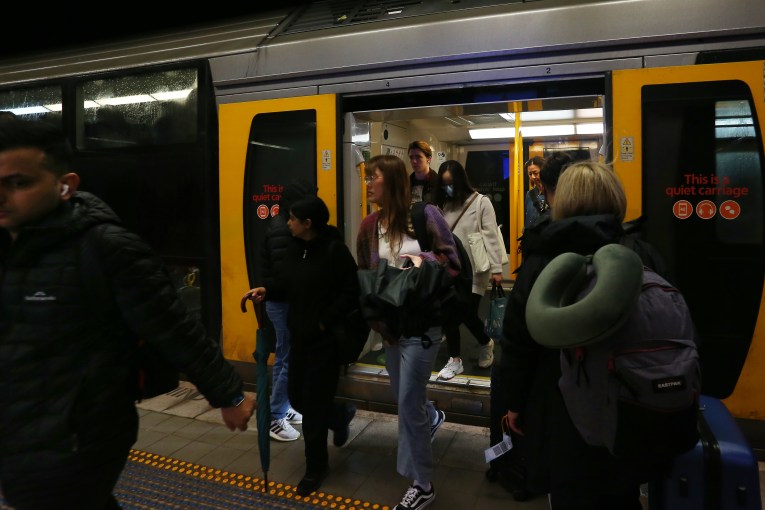How Victoria can cement its gains, put a lid on COVID hotspots and start getting back to normal

The collective effort by Victorians to suppress the coronavirus spread throughout metropolitan Melbourne has been immense – and costly as the economic and human toll of the crisis is felt across the entire state.
There were seven new cases across the state on Friday as Melbourne’s 14-day average dropped to 12.8 and the regional figure to 0.2.
But despite the promising numbers, there are still hotspots to stamp out.
And they’re all in the same area: Aged care homes.
As of Friday, the 10 biggest clusters are all in aged care facilities, with the 32 active cases – nearly double the size of the next-largest outbreak – at the Estia aged care facility in Keilor in Melbourne’s north-west,
Modelling shows that if aged care homes are removed from the broader statistics, the Melbourne metropolitan region falls below four cases a day – well below the threshold required to move to Step Three.
How does Victoria get over the final hurdle?
The move to return Australia’s second-largest city back to some semblance of normalcy comes after a scathing Royal Commission report released late on Thursday made six urgent recommendations to fix deplorable conditions at some nursing homes during the pandemic.
Professor Catherine Bennett, chair in epidemiology at Deakin University says there is a case for Victoria opening up sooner than October 19 as the commonality of mystery cases decreases across the state. But that applies only if aged care clusters are fully contained.
On Friday, the Chief Health Officer confirmed three-quarters of all new cases are linked to health care, with a vast majority in aged care.
“The sentinel surveillance is a key step to not only protect facilities from staff attending work whilst infectious, even if they are unsymptomatic,” Professor Bennett told The New Daily.

The Estia outbreak at its Keilor aged care home is the worst active cluster in Victoria. Photo: AAP/TND
“This is also a way to gauge if the virus is still circulating in the wider community … and will help close down the last of these clusters as well as the small amounts of community transmission that may be linked.”
Alternative models reveal that when aged care clusters are removed from the overall dataset, there are only 3.2 cases a day over a 14-day average in Victoria – which Professor Bennett confirmed.
The state’s largest active cluster at Estia Health in Keilor, and the facility’s second outbreak, began when a resident unknowingly carried the virus into the centre following a brief hospital visit on September 6, where he was exposed to a COVID-positive patient for two hours.
The New Daily revealed the Victorian Department of Health and Human Services (DHHS) had given the facility permission to ease strict infection control protocols from September 5, just days before the second outbreak started.
What happens next?
Thousands of essential workers crossing between metropolitan and regional Victoria each day without increased coronavirus transmission – another positive indicator that widespread community has all but ceased.
Professor Bennett says with both metropolitan and regional Victoria on the same step, the Melbourne boundary could be lifted. And if there are no mystery cases for a fortnight then state borders should also open.
“The 14-day average case number may not be zero, but that should not matter if there are no concerns about remaining cases,” she said.
From September 16-29 there were 14 cases with an unknown source in Melbourne and none in regional areas.
The latest numbers come as health authorities confirm two workers in the state government’s revised hotel quarantine program were on duty while infectious.
The Department of Health and Human Services says the workers, among nine who have tested positive since the program was overhauled, were asymptomatic at the time.
The DHHS also says the latest positive case was in late August.

A COVID outbreak has been linked to Chadstone shopping centre.
On Friday, Victorian Attorney-General Jill Hennessy said the hotel quarantine program would now have “strong and accountable leadership in terms of the structures that we are now using to deliver emergency accommodation – making sure that we have got proper oversight, audit and proper checks and balances.”
The hotel quarantine program, which sparked the state’s second wave of COVID-19 infections, is now being run by Corrections Victoria.
“The one message is that we are really confident in the reset and when (international) flights arrive, we certainly will be ready,” said Corrections Victoria Commissioner Emma Cassar.
Of Thursday’s 15 reported cases, four were linked to the Chadstone shopping centre outbreak that has now grown to eight people and includes a family in Frankston.
Deputy Chief Health Officer Allen Cheng said the centre had been deep-cleaned and relevant staff contact-traced.
“It is perfectly safe to go back into Chadstone at this time,” Dr Cheng said.
On Friday, Premier Daniel Andrews said the Chadstone outbreak showed why it is not yet safe to further ease state restrictions.
“If we were to open up now, just as our modelling tells us, just as our experts confirm … even a handful of these events won’t be a handful of cases. It will be many hundreds of cases,” he said.








